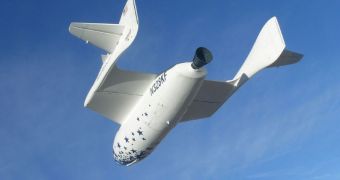Space industry analysts believe that we may be heading for another space bubble, as it happened before in the 1990. And they have the official statistics to prove it.
At this point, private spaceflights are considered to be the future of space travel. Companies that aim to provide affordable seats on flights taking passengers to the edge of space are springing up all over the place.
All around the United States, private ventures are making deals among each other, or with local and federal authorities, for constructing new launch platforms or spaceports.
There are already seven federal and eight non-federal launch sites licensed by the US Federal Aviation Administration (FAA), and applications for many more are currently pending.
But experts say that the industry may be over-extending, and also overestimating the interest that people have in suborbital spaceflights, Technology Review reports.
Back in the 1990s, when satellite cell phones were all the rage, the space industry estimated that about 1,000 communications satellites will be launched to space over the next decade or so.
Countless start-ups popped up, seeking to meet this demand, which apparently never existed. After about 150 satellites were launched, the industry collapsed.
This happened because more and more communications companies decided to base their networks on land relays, circumventing the need for expensive satellites.
At this point in time, the same could happen to companies such as Orbital Sciences Corporation (Orbital), Space Exploration Technologies Corporation (SpaceX) and Virgin Galactic, to name but a few.
They are all developing unique spacecrafts, capable of either going to low-Earth orbit (LEO) and meeting up with the International Space Station (ISS), or take several passengers to the edge of space.
The Sierra Nevada Corporation, the Boeing Company, XCOR, PlanetSoace and Blue Origin are additional names from the industry that are producing various spacecraft designs.
But their supplies of ships, trained personnel and spaceports may contribute to creating an artificial growth bubble, that has little to do with the actual demand for such technologies and experts.
Undoubtedly, some private machines are needed, at least in the US, to fill in the void that the retirement of the space shuttles will leave behind. But this many will most likely do more harm than good.

 14 DAY TRIAL //
14 DAY TRIAL //